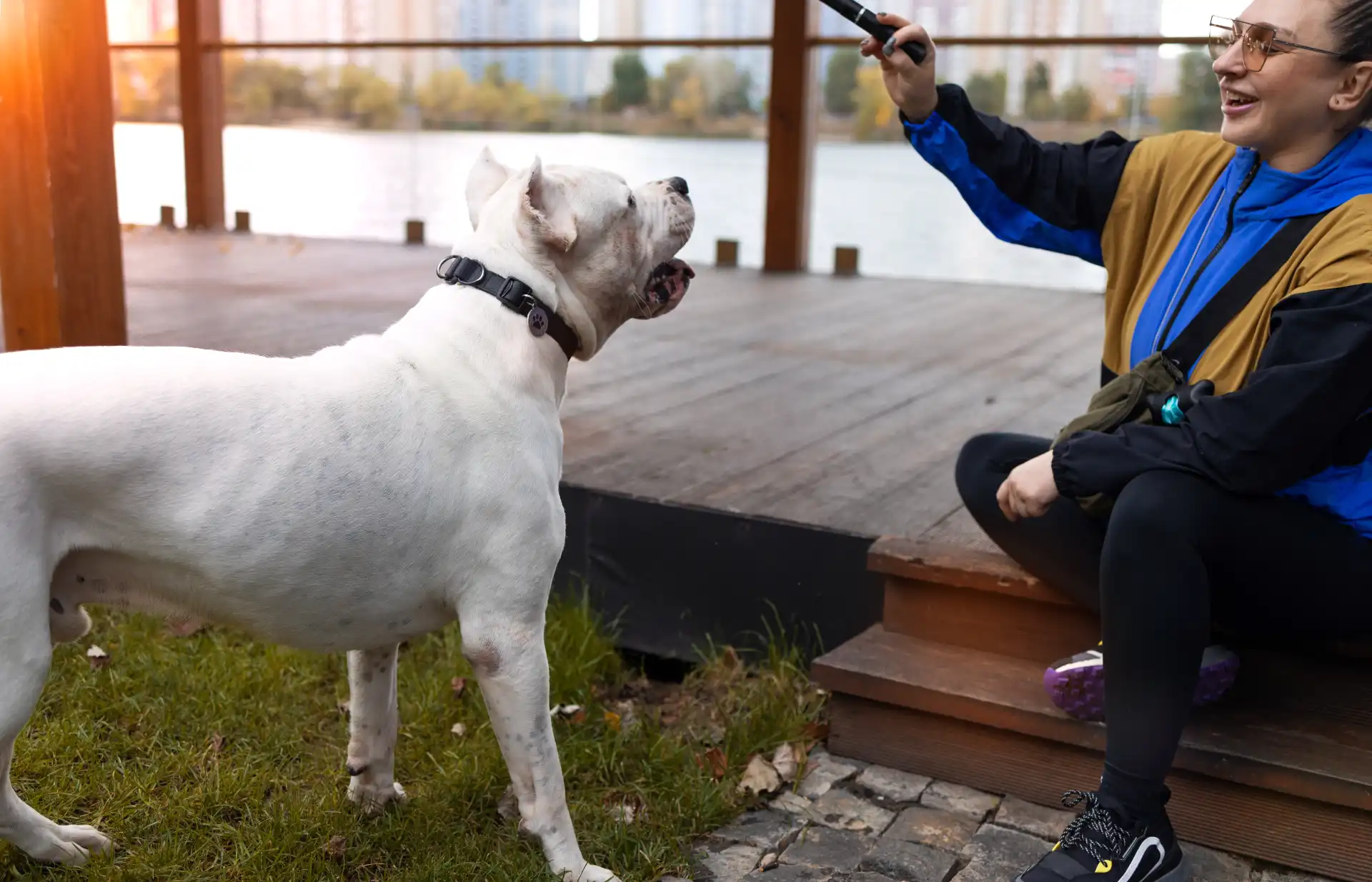Training a bulldog doesn’t have to be a battle of wills. With the right strategy and patience, you can train a Continental Bulldog to be a calm, well-mannered, and responsive companion. This breed is more active and athletic than their English cousins—which means they’re also more eager to engage. But you’ll still need the right tools, timing, and mindset.
What Makes Training a Continental Bulldog Different?
Continental Bulldogs are intelligent but independent. They’re alert, affectionate, and social—but can also be a little stubborn if they don’t see the point.
Good news: With consistent training and positive reinforcement, these dogs can excel in obedience and even agility. They just need to know what’s in it for them.
When to Start Training
The earlier, the better. Begin socialization and basic commands at 8–10 weeks old. If you adopt an older dog, no worries—adults can learn too, but the process may take a little longer.
Top 8 Tips to Train a Continental Bulldog
1. Use Positive Reinforcement—Always
Continental Bulldogs respond best to praise, treats, and consistency. Avoid punishment-based training—it leads to shutdown or rebellion.
2. Keep Sessions Short and Fun
Bulldogs have short attention spans. 5–10 minute training bursts, a few times per day, work best. End on a win to keep them excited to return.
3. Socialize Early and Often
Expose your dog to new sounds, people, dogs, and environments between 8–16 weeks. This reduces fear, reactivity, and anxiety down the line.
Use our Puppy Socialization Checklist to stay on track.
4. Focus on Key Commands
- “Sit” – The foundation of polite behavior
- “Stay” – Increases focus and patience
- “Come” – Critical for safety and recall
- “Leave it” – Prevents accidents and guarding
Need help with cues? Check out our Free Bulldog Obedience Command Guide.
5. Use High-Value Treats (Especially at First)
Dry kibble may not cut it when distractions are high. Use cooked chicken, freeze-dried liver, or cheese in early stages to capture attention.
6. Be Firm, Not Harsh
Set boundaries, but be kind. Bulldogs won’t respond to yelling—they’ll either shut down or challenge you. Calm consistency wins the game.
7. Use a Harness, Not a Collar
Continental Bulldogs have strong necks and chests. A harness prevents choking and gives you better control during leash training.
8. Make Training Part of Daily Life
Use real-life opportunities: ask for a “sit” before meals, a “stay” at doors, or a “leave it” when dropping food. Training is more than tricks—it’s communication.
Common Training Challenges (and Fixes)
Stubbornness?
Make tasks worth it. Use higher-value rewards or switch up your location to keep things interesting.
Leash pulling?
Use “stop and go” technique. Stop walking when they pull, reward when the leash loosens. Consider a front-clip harness for more control.
Jumping up?
Ignore the jumping. Reward calm, four-paws-on-the-floor behavior instead. Don’t unintentionally reward bad behavior with attention.
Crate and Potty Training
Crates are not punishment—they’re safe spaces. They help with housebreaking, travel, and giving your dog a break.
- Take your dog out every 2–3 hours as a puppy
- Reward immediately after pottying outside
- Be consistent and watch for signs (sniffing, circling)
Grab our Potty Training Plan PDF to simplify your routine.
When to Get Professional Help
If your Continental Bulldog shows signs of aggression, resource guarding, or extreme anxiety, connect with a certified trainer or veterinary behaviorist. Early intervention prevents problems from escalating.
Use CCPDT.org to find a certified trainer in your area.
Final Thoughts on How to Train a Continental Bulldog
To train a Continental Bulldog well, you don’t need to be a drill sergeant. You just need clarity, patience, and a sense of humor. Bulldogs will test boundaries—but when they trust you, they’ll follow your lead.
You’re not just teaching obedience—you’re building a lifelong bond.
FAQ
Are Continental Bulldogs easy to train?
They’re moderately easy with the right approach. They’re smarter and more athletic than English Bulldogs but still need firm, consistent guidance.
What’s the best age to start training?
Start at 8–10 weeks. Early training leads to better social skills and fewer behavior problems in adulthood.
Can I train my Continental Bulldog without a professional?
Absolutely. Many owners succeed with at-home training, especially when they follow structured plans and stay consistent. But if issues arise, don’t hesitate to get help.

